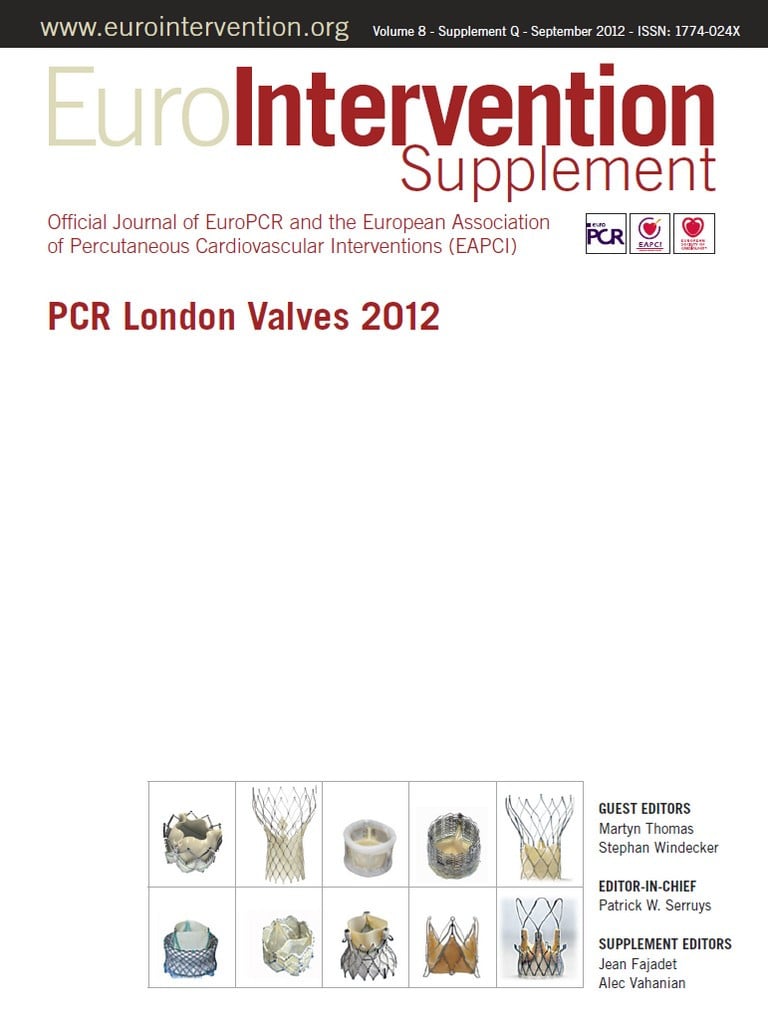![]()
Risk assesment in TAVI including valve-in-valve
Transcatheter aortic valve replacement for degenerative bioprosthetic surgical valves: results from the global valve-in-valve registry
Aims: Transcatheter aortic valve-in-valve (VIV) implantation is an emerging therapeutic alternative for patients with failed surgical bioprosthesis and may obviate the need for a redo surgery. We aimed to evaluate the clinical results of this technique using a large worldwide registry.
Methods and results: The registry included 416 patients with degenerated aortic bioprosthetic valves (age 77.7±9.7 years; 55.3% men) from 54 cardiac centres. The mode of failure was stenosis (n=168, 40.4%), regurgitation (n=125, 30%), and combined stenosis and regurgitation (n=123, 29.6%). Implanted devices were Edwards SAPIEN (n=225), CoreValve (n=190) and Melody (n=1). Adverse procedural outcomes included 11.1% device malposition and 1.9% ostial coronary obstruction. Post procedure, valve maximum / mean gradients were 28.5±14.3 mmHg / 16.1±9.0, respectively. Independent predictors for high post-procedural gradients (mean ≥20 mmHg) were baseline bioprosthesis stenosis (vs. regurgitation, odds ratio [OR], 6.33, p<0.001) and the use of the Edwards SAPIEN device (OR 2.1, p=0.008). At 30-day follow-up, all-cause mortality was 7.8% and 87.5% of patients were at New York Heart Association functional Class I/II. One-year survival was 82.6%. Using multivariate analysis, the strongest independent predictor for one-year mortality post-VIV was baseline bioprosthesis stenosis (vs. regurgitation, OR 3.7, p=0.003).
Conclusions: The VIV procedure is clinically effective in most patients, with one-year results comparable with other TAVR cohorts. Baseline bioprosthetic stenosis is the strongest predictor for both elevated post-procedural gradients and one-year mortality.

